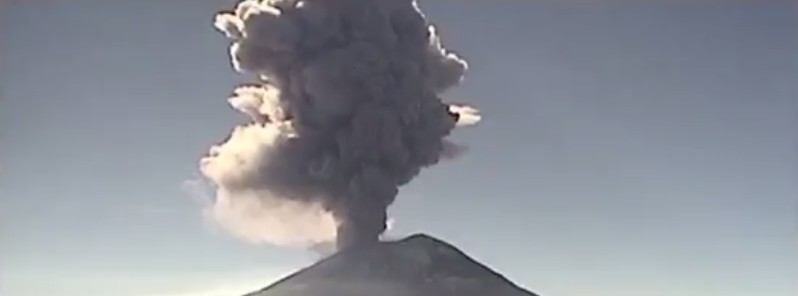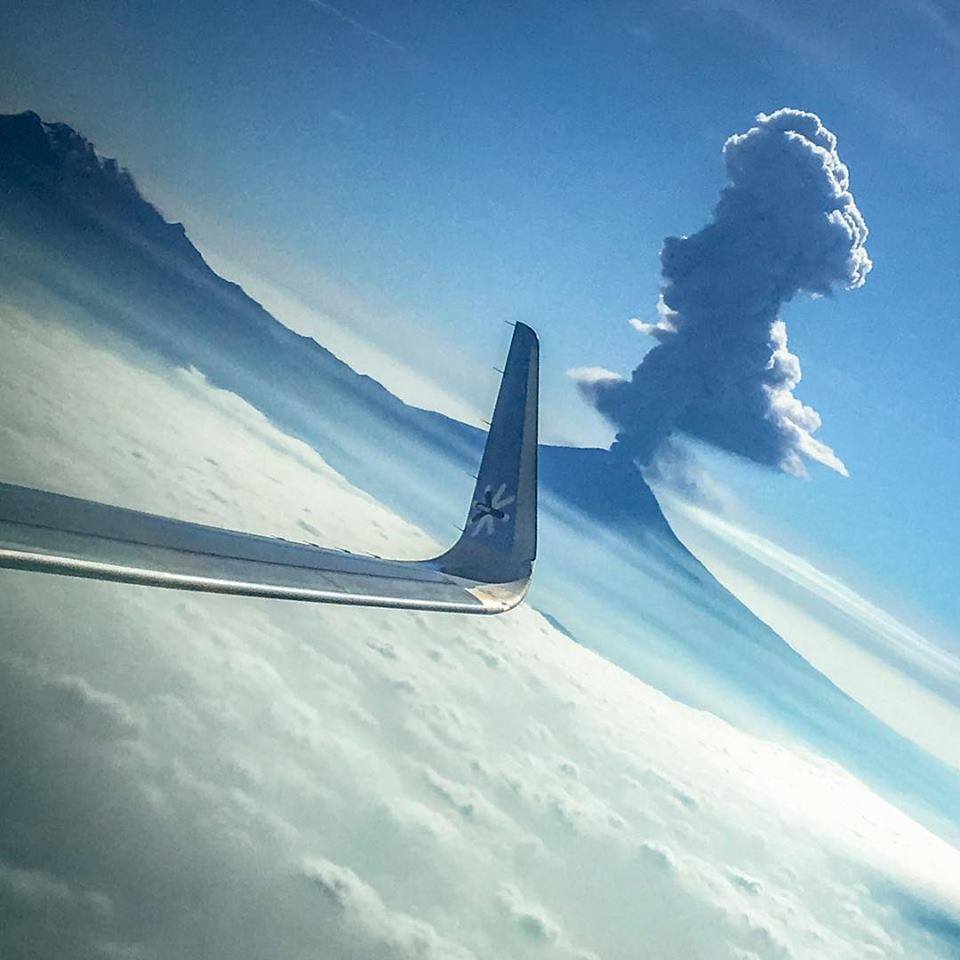Powerful eruptions at Popocatépetl volcano, Mexico

A powerful eruption occurred at Mexico's Popocatépetl at 15:45 UTC on November 25, 2016, followed by another one at 15:54 UTC today.
Volcanic ash and gasses from yesterday's eruption moved NE and reached nearly 11.5 km (38 000 feet) above sea level, according to the Washington VAAC advisory issued at 18:01 UTC.
At 17:15 UTC, when CENAPRED issued their latest report, the eruptive column was reaching 5 km (3.1 miles) above the crater. This is 10.4 km (34 120 feet) above sea level.

Popocatepetl eruption on November 25, 2016. Credit: Anders Sotelo Cauduro
Slight ash was reported over the nearby city of Atlixco but CENAPRED warned it could be expected in the southeastern and northeastern sectors, mainly in municipalities of Cholula, Tochimilco, San Nicolás de los Ranchos, Tianguismanalco, Ocoyucan and Puebla.
The agency emphasizes that people should not go near the volcano, especially near the crater, due to the hazard caused by ballistic fragments.
Comparto el #Video desde Altzomoni, de la reciente actividad del #Popocatépetl. pic.twitter.com/Ov8xW9B4Gz
— Luis Felipe Puente (@LUISFELIPE_P) November 25, 2016



At 15:54 UTC today, Mexico City MWO reported a new emission of volcanic ash to 6.5 km (21 000 feet) a.s.l. moving SW. The previous emission has dissipated, the Washington VAAC reported.
Geological summary
Volcán Popocatépetl, whose name is the Aztec word for smoking mountain, towers to 5426 m 70 km SE of Mexico City to form North America's 2nd-highest volcano. The glacier-clad stratovolcano contains a steep-walled, 400 x 600 m wide crater. The generally symmetrical volcano is modified by the sharp-peaked Ventorrillo on the NW, a remnant of an earlier volcano. At least three previous major cones were destroyed by gravitational failure during the Pleistocene, producing massive debris-avalanche deposits covering broad areas to the south. The modern volcano was constructed south of the late-Pleistocene to Holocene El Fraile cone.
Three major plinian eruptions, the most recent of which took place about 800 CE, have occurred from Popocatépetl since the mid Holocene, accompanied by pyroclastic flows and voluminous lahars that swept basins below the volcano. Frequent historical eruptions, first recorded in Aztec codices, have occurred since precolumbian time. (GVP)
Featured image credit: Eruption of Popocatepetl volcano on November 25, 2016. Credit: CENAPRED

I remember in the 80’s, when a Volcanic eruption took place in Seattle.’ My brother who was living their at the time called to tell us.’ I was truly amaized when we started getting ashes all the way down in Pasadena California; then it rained for weeks! Well’ I steel live in Pasadena ca. And before this recent volcano eruption, the forecast this winter was supposed to be pretty dry, but not anymore! So my question is could this unsuspected downpour of rain be from the recent eruption in Mexico?